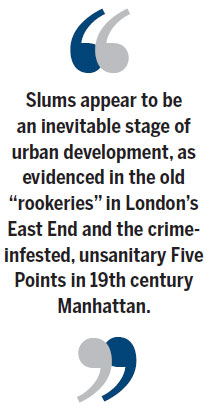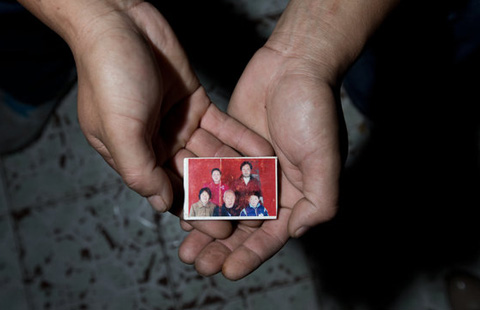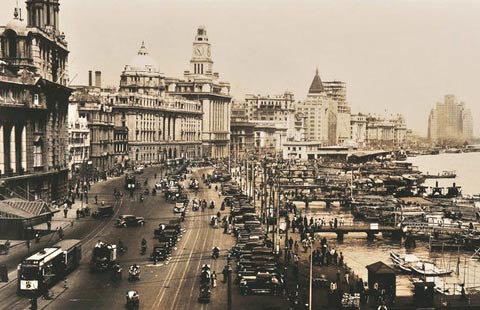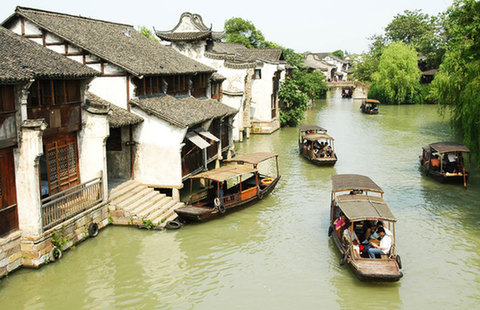
incremental upgrading and a new public-private partnership model are among the answers
In capitals across many African countries, more than half of the population resides in informal urban settlements. Most policymakers and citizens agree that slums are an eyesore at best, if not a serious human rights violation. Yet, many ambitious upgrading projects are never executed. Most are mired in political controversy from the outset, typically meeting resistance from the purported beneficiaries themselves.
Those projects that do take off are often branded failures in retrospect. For example, one project in Kenya relocated a group of slum dwellers to new, two-bedroom apartments nearby. But soon, residents complained that the service charge for utilities was unaffordable. Shortly thereafter, many families moved into one bedroom and rented out the second, while others abandoned the units entirely, surrendering them to better-heeled tenants.
So how should developing countries approach the seemingly intractable slum problem? It has long been thought that a key driver of slum growth is indigent rural folk moving to the cities. Indeed, studies show that on several objective parameters, migrants to the city are better off than they would have been had they stayed in the countryside. This makes it more likely that more and more people will set off to try their luck in urban areas.
One policy solution is devolution, aimed at revitalizing the economies in rural areas so that the pull to the city is reduced. At the very least, smaller cities can reduce pressures on metropolises. Some governments have adopted an aggressive approach to stem the tide. There, legal restrictions on transit and relocation are used to curb rural-urban migration. But even in these cases where future influx is stemmed, there remains the question of how to deal with already existing informal settlements.
For one, it is important that whatever policy is adopted, it should be holistic and address the realities on the ground. For example, some experts suggest that informal settlements are not the problem, but a solution. New migrants to the city find in them a "soft landing", often moving in with relatives or friends from their rural community who have been in the big city longer and can show them the ropes. Many slums are located close to up-market and industrial areas where residents can get to work without an expensive, crosstown commute.
And local services that appear substandard to outsiders - from restaurants and schools to clinics and nurseries - are offered at a price that is realistic to low-income customers. Thus, slums appear to be an inevitable stage of urban development, as evidenced in the old "rookeries" in London's East End and the crime-infested, unsanitary Five Points in 19th century Manhattan.
More radical strategies, then and now, recommend razing chaotic and dilapidated existing settlements for better-planned, dense, vertical structures. But unless these are carefully designed to preserve the economic opportunities and social capital that contribute to the unique vibrancy of slum communities, resettlement can do more harm than good.
A more intermediate, modern approach is incremental uprading, enhancing amenities to improve the residents' quality of life. Examples are providing clean, piped water plus infrastructure for proper drainage and waste management. Widening roads and pedestrian walkways, installing lighting, registering residents and providing addresses make it possible to provide security and emergency services.
Another common challenge is insecurity of tenure. Typically, even though the land slums occupy is owned by governments, informal "slumlord" cartels have taken over, constructing makeshift structures. This group forms a key constituency resisting reform. A longer-term solution would entail negotiation between residents, government and other interests to create a secure tenure regime.
This is not to suggest that actual provision of formal housing is impossible. This solution has worked in many jurisdictions, including Singapore and Malaysia. And it does not always have to be expensive. In Mumbai's Dharavi slum, an innovative public-private partnership is bearing fruit. Under this concept, slum rehabilitation authorities identified bona fide residents using the voters' registry. Private developers, including foreign builders, bid to be assigned a precinct for development in exchange for valuable land nearby. Residents worked closely with their assigned developer to design a modest flat to clear specifications. Families were then moved into temporary "transit camps", together with any local businesses, until the final units were complete.
While this model has faced a few challenges, the underlying concept is sound, setting forth a clear template for future projects worldwide. By refining public-private partnerships in this way, and creating a clear framework that makes informal settlements conducive for private investment, governments can improve millions of lives without huge outlays of capital.
The author is the CEO of Africa Metro, an investment firm focused on Africa's growing cities.

(China Daily Africa Weekly 11/21/2014 page9)








